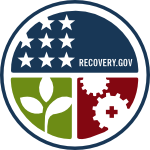 The Bay State has been awarded $22 million in the Department of Energy’s Energy Efficiency and Renewable Energy program, a little less than all other awards in New England combined; ME, RI and VT received $11M, $9.5M and $8.8M respectively.
The Bay State has been awarded $22 million in the Department of Energy’s Energy Efficiency and Renewable Energy program, a little less than all other awards in New England combined; ME, RI and VT received $11M, $9.5M and $8.8M respectively.
Massachusetts will use its State Energy Program (SEP) Recovery Act funds to advance energy efficiency across the state, especially in the building environment. The Governor’s Energy Task Force identified a number of energy efficiency retrofit projects at public facilities with potential for energy and cost savings. The state intends to leverage SEP funds for these projects by using performance contracts wherever possible.
Additionally, Massachusetts will direct Recovery Act funds to help demonstrate solutions to a number of long-standing challenges in improving building energy performance which provides the opportunity to transform future energy efficiency efforts in the state. For instance, the state will provide funding for projects that will move toward the development of a net-zero energy building, along with examining ways to reduce the state’s petroleum usage by expanding energy efficiency opportunities to people and businesses that use oil and propane for heating.
The State also recently received $49M in Recovery Act funds to weatherize approximately 17,00 homes over the next three years, while ramping up a Clean Energy Center to train and support a growing energy-efficiency workforce in the state. Under the program, Massachusetts is increasing the number of auditors and other professionals that will be needed to meet the increased demand for weatherization activities. More than 25 additional auditors have already been hired, along with new private-sector employees that will work with local organizations responsible for weatherization work.
After demonstrating successful implementation of its SEP plan, the state will receive more than $27 million in additional funding, for a total of nearly $55 million. $61 million are available once the weatherization program has program has proven successful.
(Adapted from EPA Region I’s “Community Energy Challenge Monthly Update,” Vol. 10; DOE press release; Recap
